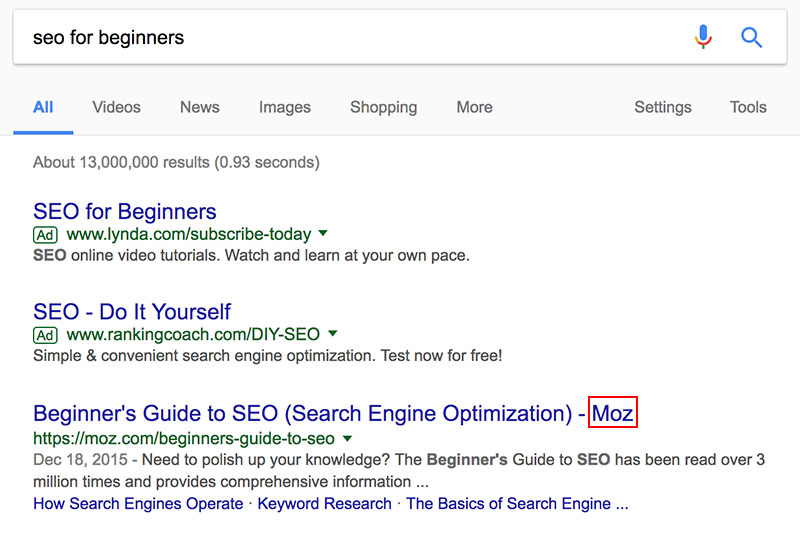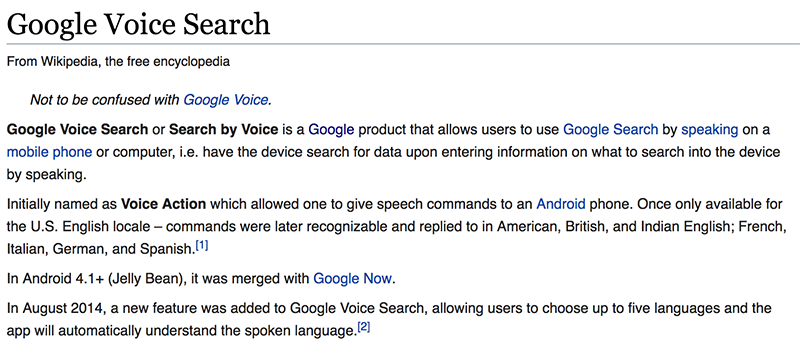Accomplishing competitive dominance online requires a head start and the ingenuity to keep up with how search engines are changing. Specifically, how their algorithms adjust.
This article will identify the SEO trends that will dominate in 2018 and perhaps, beyond it. So that you can be prepared and stay one step ahead of the curve!
Let’s face it… getting your company’s web pages to rank on page one is even more crucial today. In fact, over 90 percent of all the traffic from Google goes to websites on the first page.
Look at this:
Using Google as a benchmark, this also implies that in general, 91.5 percent of people don’t look past the first page result on search engines.
Plus chances are that this consumer behavior will never change. Which means that businesses need to become more innovative with search marketing.
Before we look at trends, a little housekeeping…
What is Search Engine Optimization (SEO)?
SEO is the process of improving the online visibility of a given web page or website in unpaid search engine results pages (SERPs).
Sometimes referred to as natural or organic traffic and it’s a big deal! Plenty of businesses like Amazon and EBay wouldn’t be as dominant in their space without a sound SEO strategy. Besides, we’re sure that you’re here because you too, realize the potential.
SEO Trends That You Must Prepare For in 2018
Let’s just jump right in, shall we?
1. There Will Be More Visual Content
More people are consuming video content online and when we look at how we learn, our brain processes visual information 60, 000 times faster than text. So it’s almost a no-brainer to include visuals as part of your SEO strategy.
What people see can have a profound effect on how they feel and the decisions they make. Hence, why visual content drives the most engagement!
You just can’t create more engaging content without visual assets to go with it. However, images can also increase page load time but that’s a debacle that this author is going to help you solve.
Your visual assets don’t have to be high-definition or HD, they just have to be relevant, useful and appealing. Use Optimizilla to compress your images.
This will reduce the size of your images by sometimes, more than 50 percent! Also, take advantage of Google’s Pagespeed Insights because it can quickly compress your images, CSS and JavaScript resources for free.
Here’s how to use it:
On the Pagespeed Insights results screen, simply scroll to the bottom of the page to find your downloadable resources.
2. Content Will Have More Substance
People are tired of reading the same old boring content that’s just re-written in different words. So today it’ll be a tad difficult to rank your content without some originality.
Google is focusing on ranking the absolute BEST result. But it isn’t just them either, Bing is following suit. Plus the smarter their algorithms or AI gets, the less effective spun or re-written content will be.
Therefore, here’s what you need to do:
Make the time or hire professionals to write original content for your business. In other words, start doing things real companies do!
Robust businesses spend a significant amount of time and money creating content that satisfies their target audiences. Whether it is featured in a magazine, newspaper or online, these organizations understand that authenticity is important for branding and marketing.
So they’ll rather invest in quality content that completely satisfies the query than the alternative. You’ll be wise to do the same!
Note: Quality content isn’t about length; it’s more about value.
3. More Responsive Websites
Rumors surfaced back in late 2016 that Google would be going mobile-first. This meant that the search giant would only crawl the mobile versions of websites and use that info to rank them.
However, it didn’t happen. But it’s apparently going to happen next year. At least, this is the goal and Gary Illyes from Google confirmed it.
This is a big move that has made a responsive approach to web design even more important. These are web pages that respond and adapt to the screen size of the visitor’s device.
This way, whether people are visiting your web pages from a tablet, smartphone or desktop device, they’ll enjoy a good user experience.
Then there’s AMP. What is it?
Google introduced AMP (Accelerated Mobile Pages) back in February 24, 2016. This was their way of ensuring that web pages loaded fast on mobile.
But since AMP requires visitors to navigate away from the primary site to an AMP page and restricts advertisements, businesses are not particularly keen on using it.
This makes sense because why use an AMP web page when you can have a responsive page that you control.
Speculations do suggest that Google is favoring its AMP pages over others in the search results. But rest assured, AMP is not a ranking factor (but that doesn’t mean they wouldn’t do it).
4. Search Engines Will Rely Heavily On AI
Since the release of Google’s RankBrain, we’ve seen the SERPs change. For instance, web pages with little or no relevance data in their snippets (and sometimes not even backlinks) rank above others who have those signals.
So what’s really happening?
AI is adjusting the search results based on how users behave. If enough people hit the back button (Pogo-sticking) after clicking through to your web page, RankBrain will demote it.
This is another reason why content will be much more substantial moving forward.
5. Branding is Your Secret Weapon
If SEO is a key strategy in your marketing plan, then you must have a brand and we don’t mean company name or trademark. That’s just one aspect of a brand.
There’s also how people perceive your business or what prospects think of when they see or hear your brand name. Strong branding can help you score brand mentions and backlinks on authoritative sites.
And if you’re able to get enough people talking about the things you do, users will literally add your brand name to specific keywords. Queries like “SEO for beginners MOZ”. That keyword phrase receives at least 10 or more searches per month.
When AI picks up this pattern, it’ll usually associate your brand with the search term. And guess who’s number one when we searched without the brand name.
6. Increased Focus On Conversion Rate Optimization (CRO)
CRO is a marketing discipline that focuses on improving conversion rates. A conversion is any valuable action that a website visitor takes such as clicking on a CTA (call-to-actions) or making a purchase. Essentially, anything that’ll help an organization increase sales.
For plenty of industries, conversion rates are between 1 and 5 percent. Companies that go above those rates focus on using collected data to improve results over time. We’ll see more organizations make CRO a focal point in the future.
7. Voice Search Will Change How We Write Content
Have you tried voice search yet? If you haven’t, you can do so right now! Pick up your phone and do a Google voice search for your company name.
Now do a search for “what is SEO” and you should hear Google voice say “short for search engine optimization”. So where did the answer come from?
This is from their dictionary but how about other queries like “what is Google voice called”. Well, voice search recited the following text from Wikipedia.
When we go to the actual Wikipedia page, we can see that the heading has our keyword (Google voice) and right below it, is the answer to that query.
8. CTR (click-through-rate) Ninjas Will Rise
Now that AI is actively demoting websites that are seen as NOT good for the user and answer boxes are running amok, increasing CTR will be more important. This is also because you don’t even have to leave Google’s platform for a lot of queries anymore.
In fact, a recent study by Moz back in March, found that 34% of searches get ZERO clicks. This means that Webmasters will need to optimize their web page snippets to encourage more clicks (title and description tags).
Time to become a CTR ninja!
9. Links Will Remain Crucial
As much as some people will like to pretend that building links isn’t as important in SEO anymore, it’s far-fetched. That’s right, acquiring backlinks to your site is still critical for SEO success.
But it’s not about quantity but the quality of links that you should focus on. And link quality isn’t always about how much Moz PA (page authority – a score that predicts how well a specific web page will rank) a page has. It’s also the context and how relevant that site is to yours.
About The Author
Hi! I’m Gabriel Nwatarali, a digital marketer and founder of Tech Help Canada. I’m super-passionate about SEO and enjoy writing about topics I love. Follow me on Twitter.









